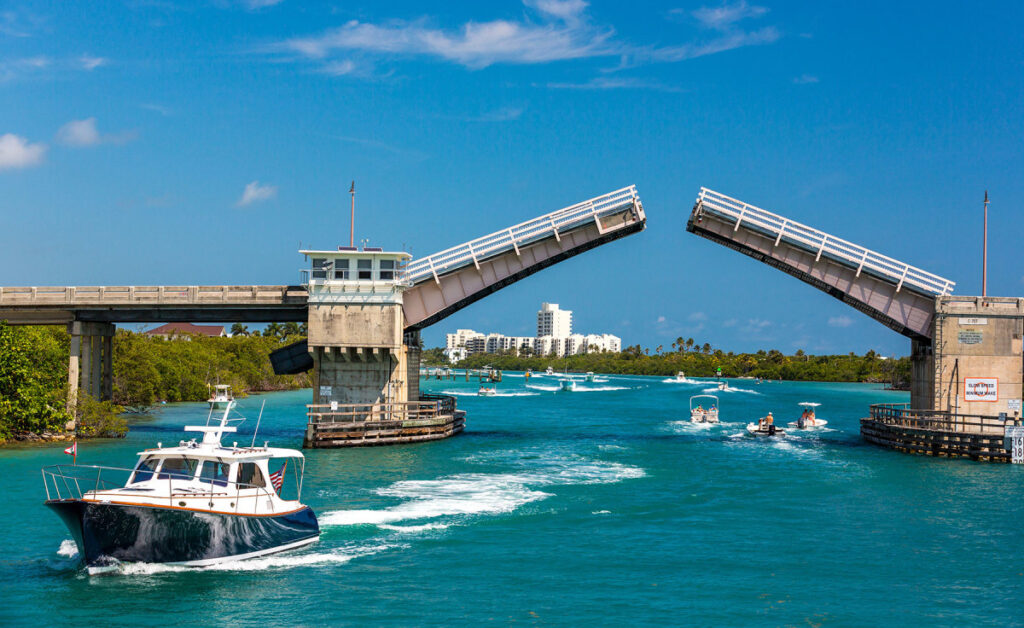What You Need to Know When Passing Under a River Bridge: A Comprehensive Guide
Passing under a river bridge can be a routine experience for many, whether you’re navigating a boat, kayak, or any other watercraft. However, there are several important considerations to keep in mind to ensure safety and compliance with regulations. This article will provide a detailed overview of what you need to know when passing under a river bridge, including safety tips, navigation rules, and environmental considerations.
Understanding River Bridges
River bridges serve as vital infrastructure, allowing vehicles and pedestrians to cross waterways. They can vary significantly in design, size, and purpose. Understanding the characteristics of river bridges can help you navigate safely when passing underneath them.
Types of River Bridges
- Fixed Bridges: These bridges do not move and are designed to remain in place. They can be low or high, depending on the waterway and the type of traffic they accommodate.
- Lift Bridges: These bridges can be raised to allow taller vessels to pass underneath. They are typically found in areas with significant maritime traffic.
- Swing Bridges: Similar to lift bridges, swing bridges rotate on a pivot to allow boats to pass. They are often used in narrow waterways.
- Pontoon Bridges: These floating bridges are supported by pontoons and can be temporary or permanent structures.
Important Considerations When Passing Under a River Bridge
When navigating under a river bridge, there are several key factors to consider:
1. Clearance Height
One of the most critical aspects to assess is the clearance height of the bridge. This is the vertical distance from the water surface to the lowest point of the bridge. Ensure that your vessel’s height does not exceed this clearance to avoid collisions.
- Check Local Charts: Waterway navigation charts often provide information about bridge heights and clearance. Always consult these charts before heading out.
- Tide and Water Levels: Be aware that water levels can fluctuate due to tides, rainfall, or other factors. Ensure that your vessel’s height remains within the clearance limits under varying conditions.
2. Navigation Rules
Understanding navigation rules is essential for safe passage under a river bridge. Here are some key guidelines:
- Right of Way: Familiarize yourself with the right-of-way rules for vessels. Generally, larger vessels have the right of way over smaller ones.
- Sound Signals: Use sound signals to communicate your intentions, especially in narrow or congested areas. For example, one short blast indicates you are passing on the right, while two short blasts indicate passing on the left.
- Speed Limit: Observe any posted speed limits in the vicinity of the bridge. Excessive speed can lead to accidents and make it difficult to maneuver.
3. Environmental Considerations
When passing under a river bridge, it’s important to consider the surrounding environment:
- Wildlife: Be mindful of wildlife habitats near riverbanks and avoid disturbing nesting areas or feeding grounds.
- Pollution: Ensure that your vessel does not contribute to water pollution. Follow all regulations regarding waste disposal and fuel spills.
- Weather Conditions: Monitor weather conditions before and during your passage. High winds, storms, or heavy rain can affect visibility and water conditions.
Safety Tips for Passing Under a River Bridge
- Use Proper Lighting: If navigating at night or in low visibility, ensure that your vessel is equipped with proper navigation lights.
- Maintain a Safe Distance: Keep a safe distance from the bridge structure to avoid collisions with supports or debris.
- Stay Alert: Remain vigilant for other vessels, swimmers, or floating debris as you approach and pass under the bridge.
- Wear Life Jackets: Ensure that all passengers are wearing life jackets, as this is a crucial safety measure.
- Communicate with Crew: If you have crew members on board, communicate clearly about your intentions and any potential hazards.
Table: Key Information for Passing Under River Bridges
| Consideration | Details |
|---|---|
| Clearance Height | Check local charts for bridge heights |
| Right of Way | Larger vessels generally have the right of way |
| Sound Signals | Use sound signals to indicate intentions |
| Speed Limit | Observe posted speed limits |
| Wildlife Awareness | Avoid disturbing wildlife habitats |
| Pollution Prevention | Follow regulations on waste disposal |
| Weather Monitoring | Stay updated on weather conditions |
Common Challenges When Passing Under a River Bridge
- Low Clearance: Many river bridges have low clearance, which can pose a challenge for taller vessels. Always measure your vessel’s height and account for water level fluctuations.
- Strong Currents: Rivers can have strong currents, particularly near bridges. Be prepared for changes in water flow and adjust your navigation accordingly.
- Debris: Bridges can accumulate debris, especially after storms. Watch for floating logs, branches, or other obstacles as you approach the bridge.
- Traffic Congestion: Bridges may be located in areas with heavy boat traffic. Be cautious and maintain situational awareness to avoid collisions.
Conclusion
Passing under a river bridge requires careful consideration of various factors, including clearance height, navigation rules, and environmental impacts. By following the guidelines outlined in this article, you can ensure a safe and enjoyable experience while navigating under these essential structures. Always prioritize safety and be aware of your surroundings to make informed decisions while on the water.
FAQ Section
- How do I find the clearance height of a river bridge?
You can find the clearance height on local navigation charts or by consulting with local authorities. - What should I do if my vessel is too tall to pass under a bridge?
If your vessel exceeds the clearance height, consider finding an alternate route or waiting for the water level to decrease. - Are there specific navigation rules for passing under bridges?
Yes, familiarize yourself with local navigation rules, including right-of-way and sound signals. - Can I pass under a bridge at night?
Yes, but ensure your vessel is equipped with proper navigation lights and that you are aware of your surroundings. - What should I do if I encounter strong currents near a bridge?
Adjust your speed and course as needed, and be prepared for sudden changes in water flow. - Is it safe to swim near river bridges?
Exercise caution when swimming near bridges, as currents and debris can pose risks. - How can I prevent pollution while navigating under a bridge?
Follow all regulations regarding waste disposal and ensure that your vessel is maintained to prevent leaks. - What should I do if I see wildlife near a river bridge?
Maintain a safe distance and avoid disturbing wildlife habitats. - Can I use a kayak or canoe to pass under a river bridge?
Yes, but be mindful of clearance heights and currents, and ensure you have the necessary safety equipment. - Where can I find more information about river navigation?
You can refer to local boating guides, navigation charts, and resources from the U.S. Coast Guard or local authorities.
Additional Resources
For more information on river navigation and safety, you can visit the following link:



